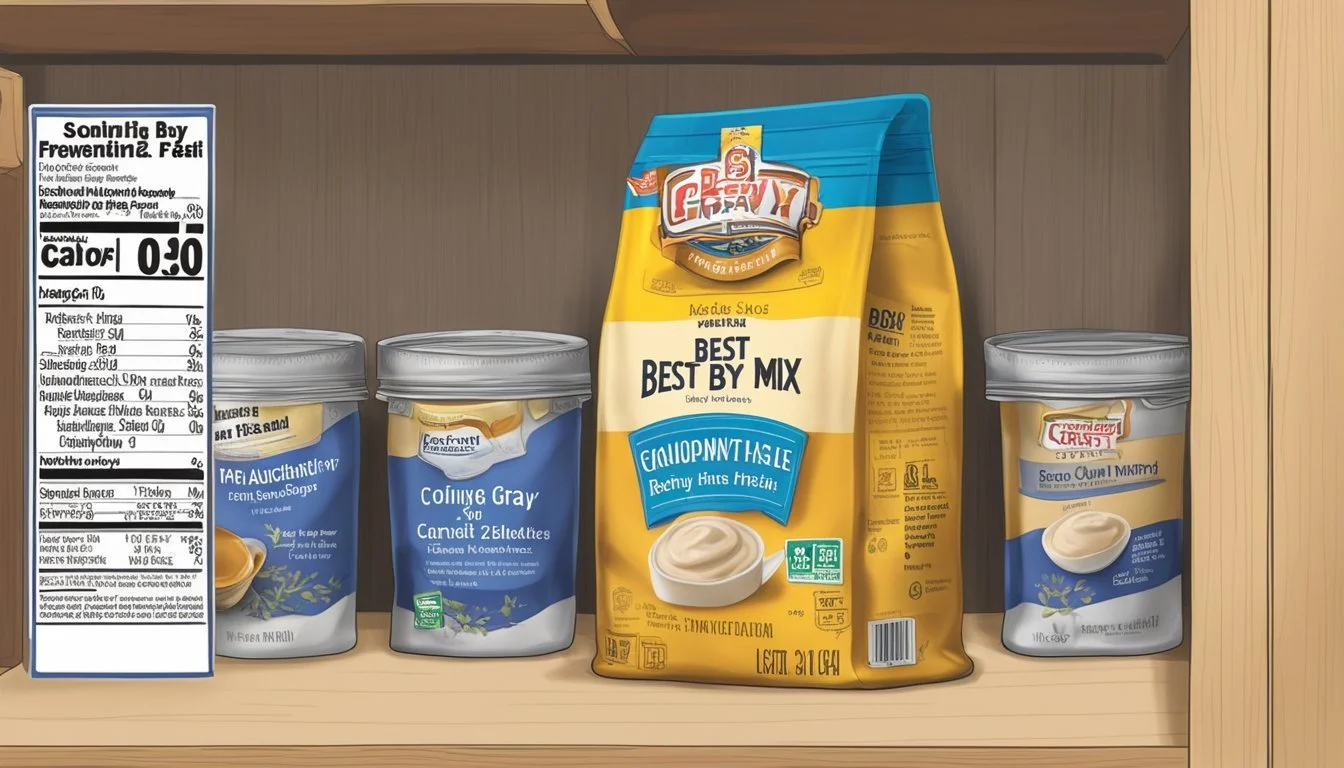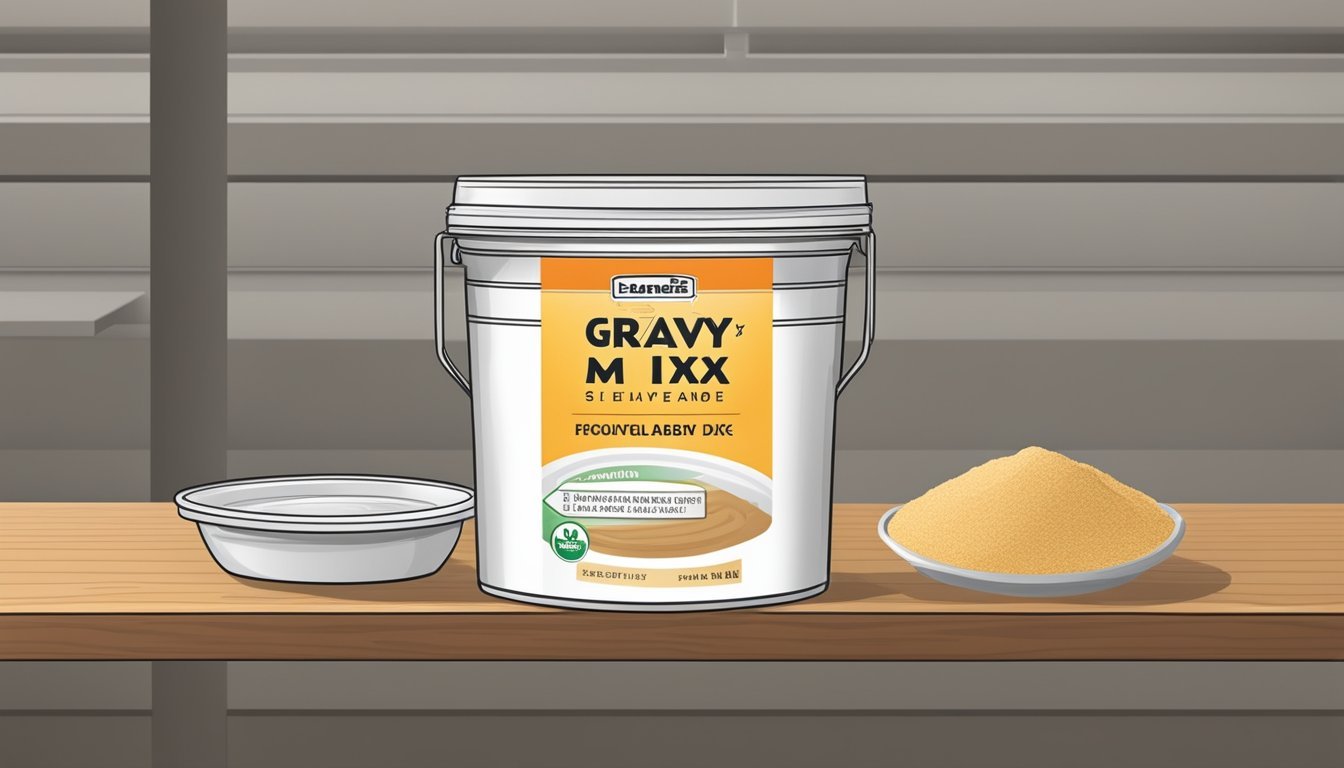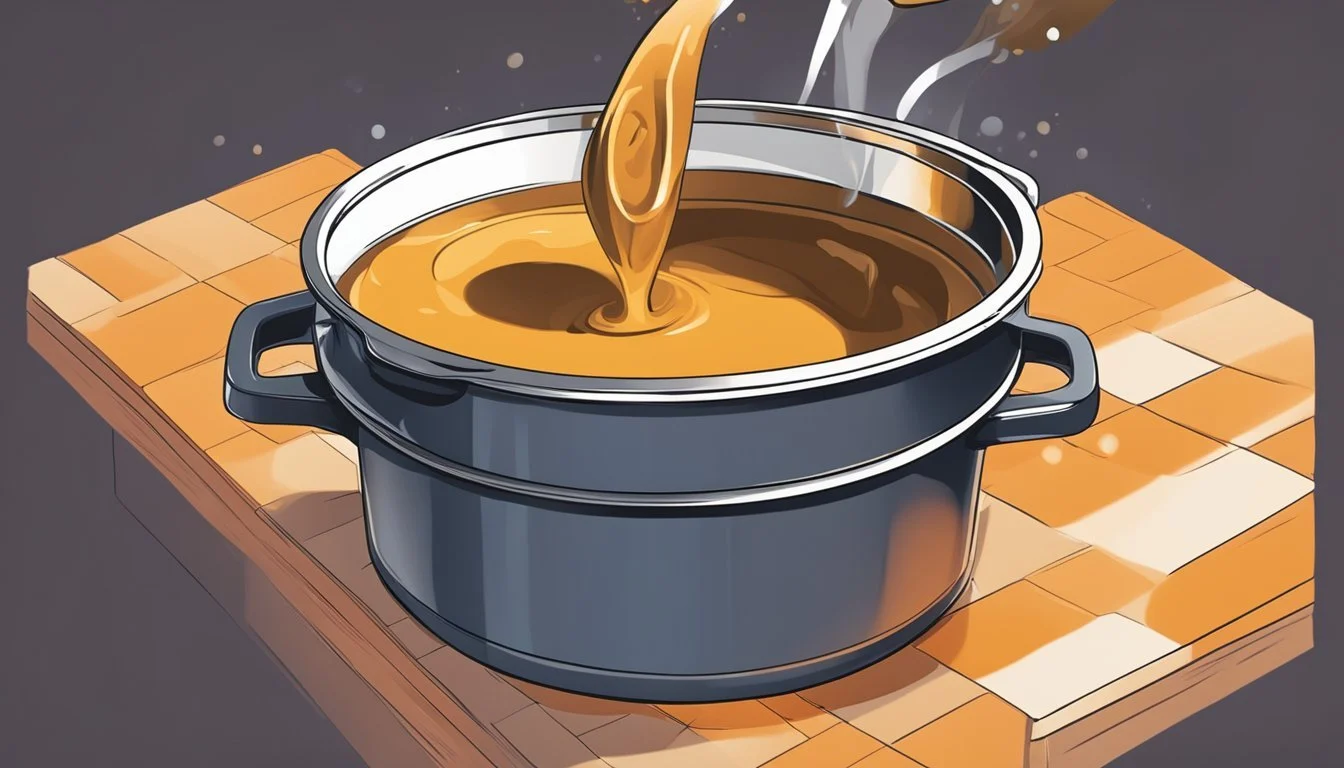How Long Does Gravy Mix Last?
Shelf Life and Storage Tips
Dry gravy mix is a pantry staple known for its convenience and long shelf life. These mixes allow cooks to quickly prepare gravy that adds flavor to a variety of dishes. The longevity of dry gravy mix is due to its low moisture content, which inhibits the growth of microorganisms that lead to spoilage. When stored properly in a cool, dry place and kept tightly sealed, a package of dry gravy mix maintains best quality for about two years at room temperature. The stability of the ingredients used in the mix contributes to its extended shelf life.
Although the best quality is retained for a couple of years, dry gravy mix can often remain safe to use beyond the package's expiration date. Consumers can generally use the mix for a considerable time after the best before date if the package is unopened and has been stored correctly. It's important to note that the potency of the flavor can decrease over time. Even when the 'expiration' is past, the mix is usually safe to consume, provided it shows no signs of spoilage and has been stored under optimal conditions. It is recommended to inspect the mix for any odd odors or discoloration before use, as these are signs that the product may no longer be good to consume.
Understanding Gravy Mix
Gravy mix is a blend of seasonings and thickening agents, such as flour or cornstarch, which are designed to create a flavorful sauce when combined with water or broth. Common in many households, gravy mix serves as a quick means of complementing a variety of protein dishes, from poultry to beef.
The primary components of a gravy mix include:
Seasonings: Depending on whether the mix is for turkey, chicken, beef, or another flavor, the blend of seasonings will vary to match the intended protein.
Thickening agents: Typically flour or cornstarch, these ingredients are responsible for helping the gravy attain its signature consistency when heated.
Food Storage Information:
It is imperative to store gravy mix correctly to maintain its quality and extend its shelf life. The following points should be considered:
Location: Store in a cool, dry area, away from direct sunlight or heat sources such as stoves.
Packaging: Keep the gravy mix in an airtight container or ensure that the original packaging is tightly sealed.
Storage Method Expected Shelf Life Room Temperature Up to 2 Years Refrigerated (Prepared) Up to 4 Days Freezer (Prepared) 3 Months to 1 Year
Understanding these storage fundamentals alongside the composition of gravy mix ensures prolonged freshness and safety. It is crucial to follow these guidelines to enjoy the full flavor and benefits of the gravy mix over time.
Shelf Life Fundamentals
When considering the longevity of gravy mix, understanding the terms related to shelf life is crucial. The 'best before' or 'best by' dates provide a manufacturer's estimate for peak quality, but often products remain safe to consume beyond these dates.
Unopened Gravy Mix Shelf Life
Dry gravy mix in unopened packages maintains its best quality for around 2 years when stored under ideal conditions – a cool, dry place away from sunlight. This timeframe can extend up to 3 to 5 years post the 'best if used by' date, though flavor intensity might reduce over time.
Opened Gravy Mix Shelf Life
Once opened, the gravy mix should be kept tightly sealed to prevent the ingress of moisture and air, which can degrade quality. Although the 'best by' date acts as a guide, the actual shelf life can vary based on storage conditions. Keeping the mix in a dry, cool environment can help prolong its usability.
Determining Quality and Freshness
To assess the quality and freshness of gravy mix, one should conduct a thorough examination involving sight, smell, and touch. These sensory checks are crucial to ensure the mix has not degraded past a usable state.
Visual Inspection
When inspecting gravy mix, consistent coloration is a primary indicator of quality. The mix should appear uniform without any significant color changes. Discoloration can signal spoilage. One should look for any visible signs of mold, which would appear as green or black spots and indicate that the gravy mix is no longer suitable for consumption. Additionally, the presence of clumps in the mix may indicate moisture ingress, which could compromise the freshness and potentially lead to foodborne illness.
Smell Check
A smell check is vital in detecting rancidity or an off odor, which are clear signs of spoilage. One should open the package and sniff carefully; the mix should typically emit a mild, characteristic aroma. Any sour, musty, or otherwise unpleasant smells suggest the gravy mix has gone bad and could pose a risk if consumed.
Texture Assessment
The texture of an unspoiled dry gravy mix should be free-flowing and powdery. Any signs of caking or separation within the mix require a closer look, as these can be indications of moisture exposure, which may result in a compromised product. If upon touching the gravy mix it feels sticky or wet, it is possible that it has undergone changes that could affect both taste and safety.
Proper Storage Methods
Proper storage of gravy mix is crucial for maintaining its freshness and ensuring food safety. Whether unopened or opened, gravy mix requires specific conditions to maximize its shelf life.
Storing Unopened Gravy Mix
Storage Conditions: An unopened package of dry gravy mix should be stored in a cool and dry area. This environment prevents the activation of any bacteria that could potentially spoil the mix.
Preventive Measures:
Temperature: Ensure the mix is away from any heat sources, such as stoves or ovens.
Sunlight: Avoid exposing the package to direct sunlight which could degrade the quality.
Storing Opened Gravy Mix
Sealing: Once opened, it's important to keep the gravy mix in an airtight container or ensure the original package is tightly closed to prevent moisture and air from entering.
Storage Steps:
Transfer the mix into an airtight container if the original packaging cannot be sealed properly.
Continue to store in a cool, dry area following the same guidelines as for unopened packages.
Impact of Temperature on Gravy Mix
Temperature plays a critical role in both the quality and safety of gravy mix. Proper storage conditions can significantly extend its shelf life and maintain its flavor profile.
Room Temperature Storage
When storing gravy mix at room temperature, it should be kept in a cool, dry place, away from direct sunlight and heat sources. Under these conditions, a dry gravy mix will generally stay at best quality for about 2 years. The package must remain tightly sealed to prevent moisture and air from compromising the mix's integrity.
Refrigeration
While dry gravy mix does not require refrigeration, milk or cream-based gravy should be stored in the refrigerator within 2 hours of cooking. It is recommended to use an airtight container with a solid silicone seal to ensure the gravy remains safe to use and preserves quality, typically lasting up to 4 days.
Freezing Gravy
Freezing is a method to further extend the longevity of gravy beyond refrigeration. They can freeze gravy, especially if it is milk or cream-based, to safeguard its quality for an extended period. To freeze gravy effectively, it should be placed in a freezer-safe, airtight container. While freezing can alter the texture, thawing and reheating properly can help maintain the gravy's desired consistency.
Using Gravy Mix Post Expiration
When it comes to using gravy mix after its expiration date, one should understand the meaning of best before dates, the safety implications, and the expected quality of the mix.
Understanding Best Before Dates
Best before dates are indicative of the time period within which the manufacturer guarantees peak quality and flavor, not safety. For dry gravy mix, this tends to be about 2 years from the production date when stored in a room temperature environment. It's important to distinguish that a best before date is not the same as a safety date.
Safety After Expiration
Expired dry gravy mix does not necessarily mean it's unsafe. If the mix remains in a dry, cool place and is properly sealed free from moisture, it should not pose health risks due to spoilage. The absence of water in the mix prevents the growth of microorganisms; therefore, safety extends beyond the expiration date.
Peak Quality Post Expiration
While safety might not be compromised, the potency of flavors can diminish over time. Consumers can use expired dry gravy mix, but they should anticipate a potential decrease in flavor intensity. The manufacturer's quality assurance typically includes the best before date, not the period that follows, so one can expect variations in taste or consistency beyond that time frame.
Gravy Mix in Meal Preparation
When incorporating gravy mix into meal preparation, it's critical to understand its versatility and how to properly reheat it to maintain the quality of your dishes, whether they involve beef, turkey, or are paired with sides like mashed potatoes.
Reheating Gravy
Gravy mix, whether homemade or canned, should be reheated to reach a temperature of 165 degrees Fahrenheit to ensure food safety. One can reheat gravy on the stovetop over medium heat, stirring frequently to prevent burning. For flour-based gravies, additional liquid such as water or milk may be necessary to achieve the desired consistency.
To reheat gravy in a microwave:
Place it in a microwave-safe container.
Cover loosely.
Heat on medium power, stirring every 30 seconds until thoroughly warmed.
Gravy Mix With Various Dishes
Gravy mix serves as a flavorful addition to a variety of dishes. A classic pairing is with mashed potatoes, where the gravy acts as a rich, savory complement. Leftovers like slices of turkey or beef can be revitalized with a generous pour of warm gravy, transforming them into a comforting meal.
For different types of dishes:
Beef: A robust beef gravy mix enhances the flavors of steaks and roasts.
Turkey: Turkey gravy mix is ideal for Thanksgiving leftovers, creating a cohesive meal.
Mashed potatoes: A smooth, creamy gravy adds moisture and depth to potatoes.
Using gravy mix efficiently in meal preparation elevates simple ingredients, offering a hospitable and satisfying dining experience.
Signs of Gravy Mix Spoilage
Before using gravy mix, it's essential to recognize signs of spoilage to ensure the safety and quality of one’s meal. Improper storage or aging can lead to changes in the gravy mix that indicate it is no longer suitable for use.
Package Conditions
When evaluating dry gravy mix, the condition of the packaging is a critical indicator. A sealed and intact package generally means the contents are protected. However, signs of spoilage include:
Bulging or swollen packets, which may suggest bacterial growth or gas production
Damaged packaging, such as tears or holes, can lead to contamination
Leaks in the package, implying compromised integrity and possible entry of microbes
Excessive moisture inside the packet, which can promote the growth of mold
Signs in Leftover Gravy
If dealing with leftover gravy, especially after events like Thanksgiving dinner, one should be attentive to these signs:
Presence of mold, typically visible as green or black spots, is a definite sign the gravy should not be consumed.
Changes in color or odor; any off-smelling gravy indicates spoilage.
Consistency changes, such as if the gravy becomes excessively thick or watery, can suggest degradation.
By heeding these indicators, one can confidently determine the safety and quality of gravy mix and leftover gravy.








